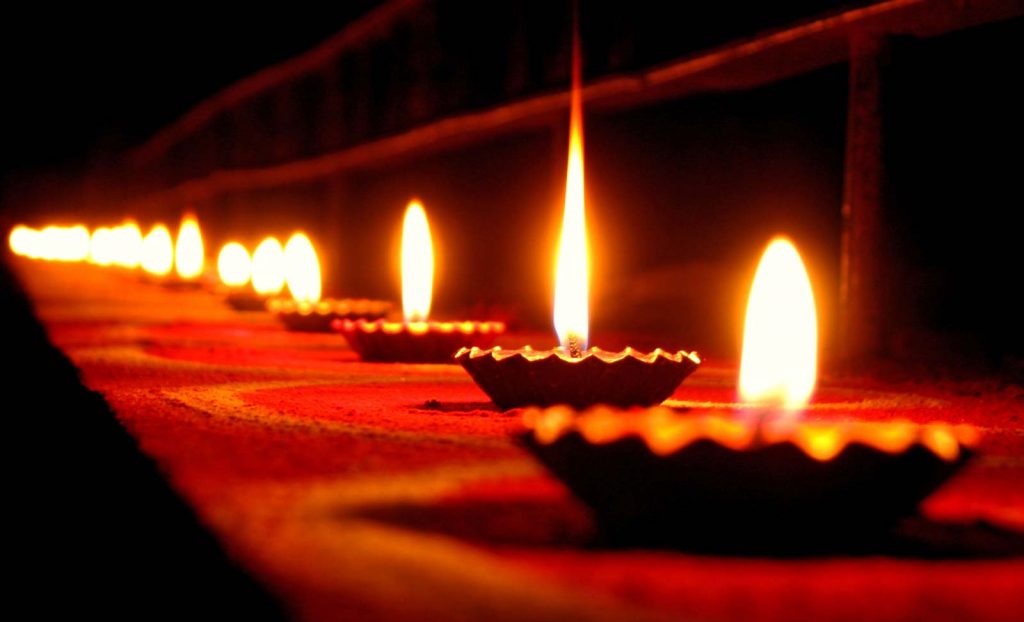
Vijaya (dashami), Asuras and Rakshasas – And the Public Spectacle of Victory
Author – Ananda Maitreya
There have been several write-ups and books about the symbolism of characters and categories such as the asuras, rakshasas, danavas etc as they are depicted in Hindu literature. More recently, some excellent counter-narratives are coming out to set facts straight about specific characters like Mahishasur – a “victory” over whom is being celebrated currently all over India. This article will not attempt to delve into that history and (mis)representation. It will, instead, try to look into another aspect wherein asuras and rakshasas feature in Hindu public celebrations involving victories over them by their gods and goddesses. It will try to ask the question if such celebrations, which gloat on the vanquishing of “villains” according to Hindu texts, do not encourage other modes of violence against the marginalized in present-day India, especially against Dalits in India.
At least two events seem to be in progress in parallel around this time (October) of the year in modern India. There is, of course, the celebration of the vicious battle between Durga and Mahishasur and then there is the reenactment of the finale to Rama’s quest to defeat Ravana and bring back Sita.
The so-called victories in both these events occur on a day called Vijaya-Divas, the victory day, also popularly known as Vijayadashami, since it falls on the tenth day of a period called the navaratras (“the nine nights”; the Bengali celebration of victory, Bijoya (victory), is held the day after Vijayadashami).
The Durga Puja tableaux, as celebrated in various pandals, typically features the earthen image of Durga sticking her long spear into the hapless Mahishasur (the buffalo-asura), who also happens to be placed by her feet. Durga, in most portrayals, is fair, why, even golden-hued; a fierce, emotionless, unsmiling beauty with strikingly large eyes. Mahishasur, by contrast, is bare-chested, dark of complexion and often with crinkled hair. The contrast is not hard to notice. The iconography is a study in power, domination, humiliation, race and a definitive flourish as Durga’s spear finishes the job, almost with gloating.
Not a thought is given to the fact that with the particular iconography of Durga as celebrated in Durga Pujas (and even as the Sherawali, ‘The Goddess with the Lion,’ more popular in the north) there is a goddess no less, armed to the teeth, who is engaged in the act of killing; the blood on Mahishasur’s body is often clearly visible. Such a gory scene is considered absolutely normal. Not just that, worship of Durga’s weaponry is part of the ritual of the puja (aayudha puja):
“The purohita worships the trident, sword, discus, sharp arrow, the shakti weapon, the staff, the fully-drawn bow, the goad, bell, axe, and the serpent noose. He also worships the Devi as the bearer of all weapons (Ritual Worship of the Great Goddess, Hillary Peter Rodrigues, p. 59).”
The assumptions of a warlike spirit and environment is taken for granted and even normalized in what are community pujas (all Bengali pujas are formally called “Sarbojanin Pujas,” Community/Public Pujas). What subtle, subliminal messages are such representations sending? It is not surprising that the Durga imagery is adopted and co-opted by the women’s wings of the RSS: the deliberately-named Durga Vahini and the Rashtriya Sevika Sangh.
As an aside, the RSS itself performs shastra puja, the worship of weapons, during what it considers its founding day, Vijayadashami.
The Vijayadashami which marks the climax of Rama’s expedition to Lanka to confront Ravana, is preceded by the enactment of Ramlilas throughout India, especially in the north. These run through an abbreviated version of the Rama story over several days. The tenth day, celebrated as Vijayadashmi, marks the victory of Rama over Ravana. Typically in public celebrations, a massive effigy of Ravana is set aflame by an actor representing Rama who sets it alight either with a flaming arrow or by some other means. Hundreds of spectators watch the scene and rejoice as the “evil” Ravana goes up in flames and apparently, dharma once again triumphs over adharma. (That is exactly what Rama was doing when he chopped off Shambuka’s head, protecting dharma against the practice of adharma in his kingdom.)
It might be considered a leap of faith and even an unwarranted move to link such celebrations of violent means of achieving “victories,” with the violence visited upon the marginalized in India. But such grand and public spectacles can certainly legitimize the hegemonic assumptions and tendencies to deal with those who are marginalized in violent ways, often in public. In a religious, faith-based, and cultural milieu charged with themes of vengeance, punishment, of absolute good and divine sanction, of stark depictions of good and evil, it is not unreasonable to assume that the culture of violence, and even a duty (dharma) to punish supposed transgressors of a code (dharma), seeps into the larger population.
The journalist Sankarshan Thakur wrote an impassioned piece in The Telegraph recently, titled, “We as a nation are practitioners of unspeakable things,” which cites instances of lynching especially of Dalits and Muslims, the practice of manual scavenging and the exploitation of women by supposed godmen and priests, among other things as evidence of the perversity that exists in the Indian society. Thakur does not pursue an investigation into any underlying causes for such pathologies and inclinations for brutalities performed most nonchalantly. But, surely, if such instances are endemic in a nation that, in the main, tries to abide by Hindu principles (dharma) for its moral compass, then one can justifiably point a finger at such a dharma – and its supposed stories of impunity in disposing of those it considers antagonistic to that dharma.
—
Ananda Maitreya is a Delhi-based writer and a student of social movements. He has been involved in various struggles of the marginalized people, including Dalit and Adivasi movements and the Palestinian struggle.



+ There are no comments
Add yours